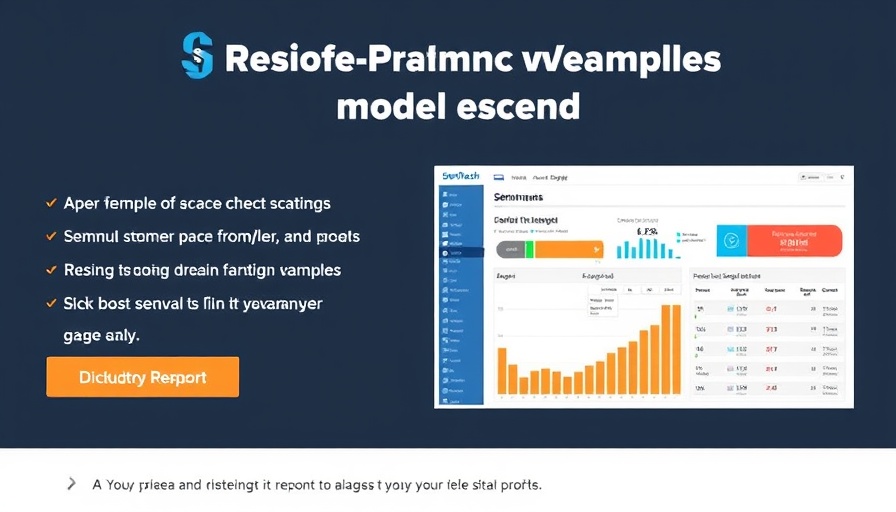
Unlocking the Power of Data: From Overwhelm to Clarity
In today's digital landscape, small and medium-sized businesses (SMBs) face a unique challenge: navigating the overwhelming amount of available data without losing sight of their marketing objectives. As the online world evolves through AI innovations and alternative search options, traditional B2B branding methods are becoming less effective. These shifts highlight a critical need for a data-informed marketing strategy that positions businesses as thought leaders.
The Changing Landscape of Search and B2B Marketing
According to recent findings from Search Engine Land, Google search impressions have skyrocketed by 49% year-over-year, yet the click-through rate (CTR) has plummeted by 30%. This scenario creates a puzzling environment: while visibility has increased, the effectiveness of traditional marketing channels diminishes. Predictions suggest that by 2025, approximately 60% of all Google searches may result in no clicks at all. This new reality demands that B2B brands find a way to reconnect with their audiences meaningfully.
Four Essential Questions for B2B Marketers
How can small business leaders adapt to this evolving landscape? Start by asking these four pivotal questions:
- What questions are potential buyers asking, and how can I provide clear answers?
- Which channels do my customers prefer and frequent during their decision-making journey?
- How can I leverage data to create a cohesive content strategy that addresses customer needs?
- In what ways can I showcase my brand as the preferred source for trustworthy information?
Finding the answers to these questions is vital for creating content that resonates with buyers and establishes authority in competitive markets.
Overcoming the B2B Content Data Dilemma
While the demand for quality content has never been higher, many B2B content marketing teams are hindered by operational challenges:
- Relying on gut feelings rather than data leads to misaligned objectives.
- Chasing vanity metrics prevents marketers from identifying what truly matters.
- Siloed information from different platforms offers a fragmented view of the customer journey.
- Lack of visibility into buyer behaviors creates unrealistic execution plans.
Addressing these dilemmas requires implementing a data-informed marketing approach that focuses on integrating insights over superficial engagement metrics.
Insights for Building a Best Answer Marketing Framework
The foundation of a successful B2B marketing strategy is understanding your audience's journey. Detailed analysis of customer behavior can illuminate their habits, preferences, and decision-making processes. A unified approach across all marketing channels fosters a smoother customer experience, capturing their attention when they seek reliable information.
Effective Implementation Strategies for SMBs
To successfully transition from data overload to a more coherent strategy:
- Invest in data analytics tools to gain transparency into buyer behaviors.
- Shift focus from vanity metrics to meaningful outcomes that drive engagement.
- Create tailored content that addresses specific queries your audience has, based on thorough data research.
- Implement a multi-channel strategy that ensures your brand is present where your customers are.
This multi-faceted approach allows SMBs to not only identify their market but also to establish themselves as trusted providers of critical information.
Looking Ahead: Future Trends in Data-Informed Marketing
As we move further into the digital age, brands will need to adapt to new technologies and changing consumer preferences. Emerging trends like AI-driven tools and personalized marketing based on customer data are poised to reshape how B2B brands approach content creation and distribution. Those who invest wisely in understanding and implementing these trends will likely lead their industries.
Conclusion: Embracing a Data-Informed Future
In summation, data-informed marketing empowers small and medium-sized businesses to adapt to the changing landscape, establishing them as thought leaders and trusted resources in their fields. By embracing this approach, brands can overcome the hurdles created by data overload and elevate their marketing strategies, leading to enhanced customer experiences and sustainable growth. As you consider your next marketing efforts, reflect on the insights within this article and prepare for a future where data is your most powerful ally.
 Add Row
Add Row  Add
Add 



Write A Comment